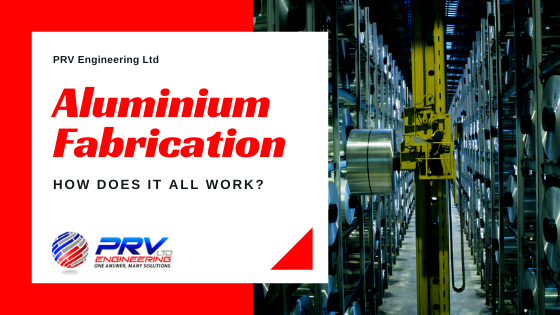
Aluminium fabrication can be described as the process of shaping different aluminium parts into a finished product. Several industries rely heavily on aluminium fabrication but none more so than building metal structures.
In this article, we will briefly cover elements of both – the aluminium fabrication process and specialist finishing.
Choosing a material is one of the most critical decisions in all aspects of production but so is the finishing process. The properties of aluminium make it highly suitable for most types of fabrication. Here, the majority of extrusions will go through a further process such as machining and surface treatment.
How Does Aluminium Fabrication Work?
Aluminium fabrication covers a wide range of processes, including welding, stamping, bending, extruding and shearing, among others. Generally, extrusions made from aluminium can be fabricated using most of the methods and equipment readily available for other materials.
To turn aluminium into a long-lasting product, it has to go through a series of comprehensive processes and techniques first. This involves two critical methods fabricators will turn to – refining and smelting.
Refining
Refining involves mixing Bauxite (a mixture of hydrated aluminium oxides and compounds of other elements such as iron), with caustic soda. Here, they are crushed together to create a slurry which is exposed to heavy pressure and extreme heat to help dissolve the aluminium compound.
From there, a liquid will form which goes into a tank where the impurities settle at the bottom while the primary solution can be filtered and pumped out. The extraction process converts the aluminium oxide in the ore to soluble sodium aluminate, 2NaAlO2.
Recommended: ‘The Bayer Process Explained’
Smelting
Aluminium smelting is the process of extracting aluminium from its oxide, alumina, often through the Hall-Héroult process which is run as a batch process. Here, the aluminium metal is deposited at the bottom of the pots and periodically siphoned off.
This involves exposing the aluminium solution to electric currents which will quickly separate oxygen and aluminium particles, ultimately forming carbon dioxide. The refined aluminium particles will settle at the bottom of the smelting pot.
Once aluminium has been processed, it has to meet the exact requirements and specifications of commercial builders and suppliers. The only way to achieve this is by using expert technicians, specialist machinery and Computer Numerical Control (CNC) software.
Benefits Of Aluminium Fabrication
Aluminium is a composite material that is manufactured into a wide range of everyday products as it offers several benefits. Among others, the main advantages include the following:
- Lightweight and durable
- Malleable and ductile
- Resistant to abrasion and corrosion
- Unaffected by magnetism
- An excellent conductor of heat and electricity
- Flexible to bend into any shape or form
Thanks to these incredible characteristics, aluminium is more suitable for certain applications compared to other metals. Understanding the properties is essential to maximise your aluminium fabrication process.
Specialist Finishing
When treating an aluminium surface, it changes the properties which can improve corrosion resistance and mechanical wear. Different finishes can also enhance the decorative appeal of the final product. Below are three of the most common aluminium finishing processes:
Anodising
Anodising is an electrochemical process often used for protecting aluminium parts that are used to manufacture military machinery and equipment. During this process, the thickness of the naturally occurring oxide layer on the aluminium surface is artificially increased.
Powder Coating
Powder coating is a popular choice for insulating thick conductors and electrical contact points. It provides a protective layer against corrosion and also carries exceptional insulation ratings. You can apply powder coating through an electrostatic spray or fluid bath and then cured through a heat-shrink process or UV light.
Related: ‘Powder Coating, Spray Painting and Shot Blasting at PRV Engineering’
Wet Coating
The preferred method for roofing and cladding is wet coating even though you can anodise or use powder coating. Many believe it’s the most cost-effective method of coating the material while in coil form. Several polyester, acrylic and fluorocarbon coatings have been developed and successfully used for decorative and corrosion-resistant surface finishes.
Recommended: ‘Shot Blasting, Surface Preparation and Specialist Coatings’
Fabrication And Finishing At PRV Engineering
Aluminium is considered one of the most common metals which have resulted in big demand for aluminium fabrication services. It’s not surprising as this composite material is all around us in our homes and office buildings. Some of the most common applications of aluminium are gates and aluminium frameworks used for doors, windows and even showers.
PRV Engineering manufactures products in all materials, ranging from the most basic of mild steels to the more exotic ones such as Monel, Inconel, Hastelloy and Titanium. Thanks to our state-of-the-art machining centre, we can undertake fabrication up to 10 tonnes in single weight capacity for various applications.
Whether you need a one-off or a large batch production, PRV Engineering can help meet all of the requirements from a single source. If you have any questions or need help with your aluminium fabrication project, please get in touch.
This site uses Akismet to reduce spam. Learn how your comment data is processed.


 Mail:
Mail: 




Leave a Comments